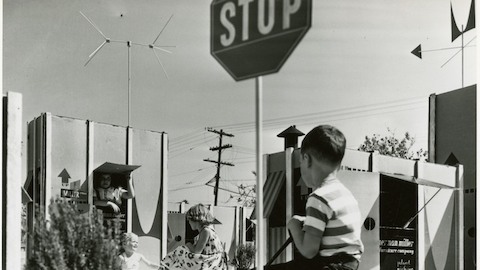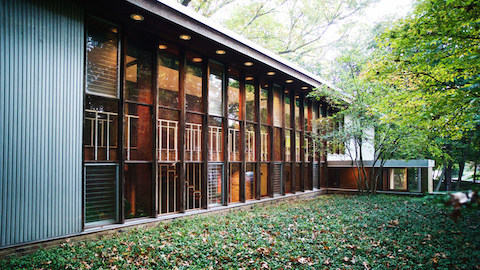A family is made up of people, but places and things — the family home, a child’s favourite toy, grandma’s China, mother’s perfume — certainly add context, providing anchors for memories as children grow and life stages flow from one into the next.
For Marianne Rohrlich, these touchstones hold particular significance. A long-time design journalist and style writer specialising in home furnishings, Rohrlich has made her professional life a celebration of these contextual things.
“I’ve written about design for 35 years now, and ‘things’ are very important to me”, she says, perched on a 19th century Ohio courthouse chair, which sits in marked contrast between a leather Soriana chair by Afra and Tobia Scarpa and a Paul McCobb tufted-back sofa in the living room of her Upper West Side apartment. “After my daughter and my son”, she adds, “stuff is my life”.
Rohrlich’s byline, which still appears regularly on the Registry column in The New York Times Sunday Styles section, has been a staple in the Times since 1984, most notably on her long-running “Personal Shopper” column, which introduced readers to countless products and designers over its long run in the paper’s now-defunct Home section.

After using this Eames Lounge Chair in her bedroom for the past 30 years, New York Times columnist Marianne Rohrlich had it refurbished and passed it down to her daughter, Monica Molenaar, and her family.
“We knew that it was an important piece of mid-century modern furniture, but we didn’t know that it would become the icon that it has become.”
-Marianne Rohrlich
Rohrlich’s own design education started early. As she recalls, her parents redid their Upper West Side apartment when she was 12 or 13, replacing their French Provincial furniture with modern pieces, many of which would become icons of the era. Throughout the design process, Marianne frequently accompanied her mother and the interior designer she hired, an associate from Ward Bennett’s office, on shopping trips to showrooms in the Decoration & Design Building, Decorative Art Center and other Manhattan design destinations.
“It was really then, in the late 1950s, that we learned about modern furniture, that we learned about Jim Thompson silks, that we learned about Edward Fields rugs”, Rohrlich says. “That was when we really became educated”.
The education took root, and not just with Marianne, whose bedroom at the time included a George Nelson chest of drawers, an Isamu Noguchi side table and a Harry Bertoia Bird Chair. Living with the clean, purposeful furniture of the mid-20th century’s greatest designers also made a lifelong modernist of Rohrlich’s father, retired investment banker Carl Glick.
When Rohrlich’s parents divorced in 1966, Mr Glick took an apartment downtown and, with Marianne’s help, furnished it with many of the same modern pieces she and her mother had found on those shopping trips — with one notable addition.
The senior partner of the firm where Glick worked had moved into an apartment in a building around the corner from his. As Glick recalls, the interior of the senior partner’s apartment was being done by the renowned New York designer Vladimir Kagan. “I went to visit one day and I saw an Eames Lounge Chair there”, Glick says. “To me it was beautiful. It was just lovely — and perfect for what I needed in my apartment”.
Glick wanted a lounge chair that he could sit in comfortably while he watched television or listened to music in his bedroom. The Eames Lounge Chair and Ottoman met these needs and more. “It was comfortable, it was well made, and it added a lovely dimension to my apartment”, Glick says.
“At that time, it was just 10 years after the chair was first introduced”, Rohrlich recalls. “We knew that it was an important piece of mid-century modern furniture, but we didn’t know that it would become the icon that it has become”.

Retired investment banker Carl Glick, aged 94, sits back in the brown leather Eames Lounge and Ottoman he purchased in 1966.
A few years passed and eventually Glick remarried. However, his second wife did not share his growing fondness for American modernism. In fact, her furniture tastes fell on the opposite end of the spectrum; she collected English antiques.
Romance — or, more to the point, Romanticism — won out and Glick indulged his new bride, who had a fully furnished apartment of her own. As the couple consolidated their stuff, much of Glick’s modern furniture was given away. The Eames Lounge Chair and Ottoman along with a few other pieces, including the Paul McCobb sofa, went to his daughter. That was 1977, and for nearly four decades, the Eames chair has served ably in Rohrlich’s bedroom.
At some point in recent years, however, the nearly 50-year-old chair began showing its age. Shock mounts had dried and begun cracking. Stitches began to fray along the welting. But perhaps most tragic, Rohrlich had stopped using it. “I’m not comfortable sitting in it now”, she laments. “It’s too low at this point. It pitches back, and I prefer something a little firmer and higher and straighter”.
The Eames chair was still in her bedroom, but it had become a storage area — “like stationary bikes become over time”, Rohrlich jokes. “Meanwhile I’m sitting on the edge of my bed because I don’t have a bedroom chair that’s comfortable for me to sit in anymore".

As part of the refurbishing process, the original shock mounts were removed and the wood frames were routered so that new shock mounts could be applied.
For a journalist who has made her name by sharing design finds with readers, shopping for a new chair didn’t pose much of a challenge. But what was she to do with her father’s lounge chair? She offered it to her daughter, Monica Molenaar, who happily accepted. “I grew up seeing it and sitting in it whenever I was watching TV in my mom’s room, so I connect it to my childhood”, Molenaar says. With that settled, Rohrlich instinctively went back into shopper mode, researching providers who could refurbish the chair for Monica and her family. She learned that even though the chair had outlived its warranty, Herman Miller could still coordinate service repairs.
Requests for service on vintage 670s and 671s (the original product numbers of the chair and ottoman) are actually quite common, according to Julie Denton, who has repaired more than 15,000 of them since 1999 as part of her job as Return for Repair (RFR) Product Coordinator.
“Most people want it left just like grandpa gave it to them”, Denton says. “We’re talking vintage pieces here, so we try to keep our processes as close to the original construction methods as possible”. For example, Denton uses a number of different routing fixtures, matching the appropriate ones to chairs from different eras.
“Most people want it left just like grandpa gave it to them.”
- Julie Denton

After inspecting the leather, which was in great condition after a half century of use, new zippers were sewn onto the original down seat and back cushions.
“People hold onto these chairs for so long, they do everything they can to try to save them: staples, hot glue, you name it”, says Tammy Williams, the 670/671 production team leader who re-sewed the brown leather upholstery on the Molenaars’ refurbished chair. “But this family’s chair is in good shape. They took good care of it. The leather is worn, but there are no tears”.
Service repairs to vintage chairs, and their costs, vary depending on the condition of the chair and its materials, as well as the service provider selected to do the work. Any necessary repair to a new 670 or 671 within the first five years of original ownership is covered under the Herman Miller warranty.
To keep the need for repairs to a minimum, Denton recommends proper care for leather and wood. Her recommendations: cleaning the leather regularly with a soft, dry cloth and, for chairs like the Molenaars’ with an oiled veneer, oiling the wood whenever it begins to appear dry. “I look at it like taking care of your own skin”, Denton says. “Cleanse and moisturise”.

To restore the finish of the 50-year-old chair, the wood frames were cleaned and several layers of oil were applied over a two-week period using the Care and Maintenance Kit for Oiled Veneer Eames Lounge and Ottoman.
After going through the refurbishing process, which takes an average of two to three weeks, the Molenaars’ Eames Lounge Chair and Ottoman was delivered to their apartment. Looking and sitting as well as it has in decades, the chair now features new shock mounts, re-sewn upholstery and a replacement brown leather hide for its ottoman. “I haven’t sat in this chair for 30 years”, Glick quips after seeing the refurbished chair for the first time. “I may have to take it back”.
From its new home in the Molenaar family’s library corner, the chair and ottoman already have met their fourth generation of owners: Glick’s great-grandsons, aged 9 and 11. Molenaar hopes to pass down the set to one of them someday.
“It’s not a new idea to pass down furniture”, she says. “If you think about the world of antiques, people who buy quality things tend to pass them on. But with so many products today, this type of quality craftsmanship isn’t there”.
“I feel that in a way, these pieces are part of my legacy”, Rohrlich adds. “It’s one thing to write about design, but to actually live with the pieces, you appreciate them on another level”.

The Eames Lounge and Ottoman’s third and fourth generation of owners: Monica Molenaar and her sons, aged 9 and 11.



